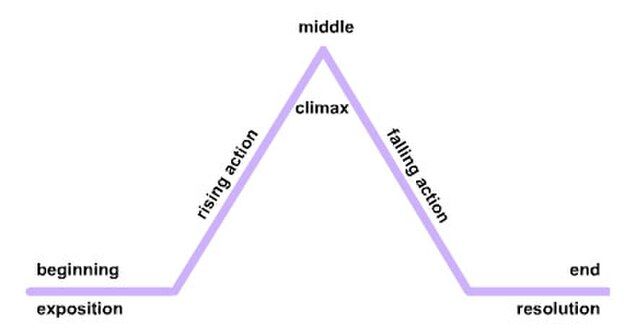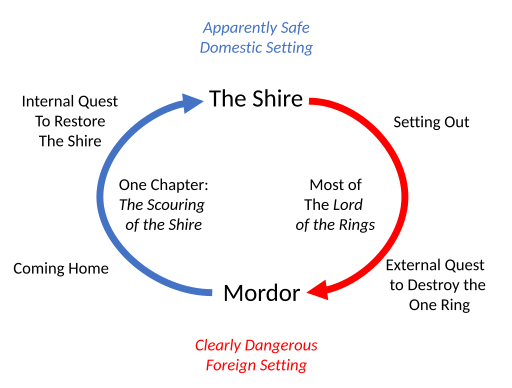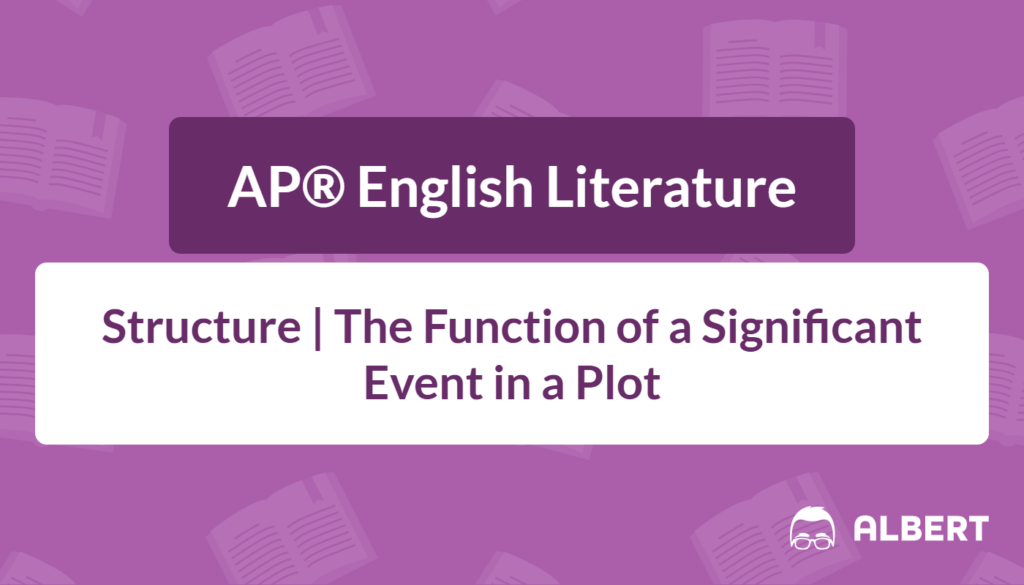Plot events serve as the backbone of any story, guiding readers through a sequence of choices, turning points, and consequences. When preparing for the AP® Literature and Composition exam, understanding how these events work in a narrative can help uncover deeper themes, character motivations, and authorial intent. This post explores the elements of plot—from exposition to falling action—and illustrates how significant events tie each stage together into a powerful narrative arc.
What We Review
Understanding the Elements of Plot
A story’s plot is its structured sequence of events. Authors often arrange plots into five basic components: exposition, rising action, climax, falling action, and resolution. These parts lay the groundwork for the emotional journey readers experience. Because the AP® Literature exam rewards close reading and analysis, recognizing and articulating how each plot element functions can elevate essay responses.
- Exposition introduces the setting, characters, and initial situation.
- Rising action complicates the initial situation, building tension that propels the story.
- Climax represents the turning point that determines the outcome.
- Falling action shows the consequences of the climax and eases the story toward its conclusion.
- Resolution offers a sense of closure or final reflection on the events.
It is often helpful to visualize these elements as a pyramid-like structure (commonly called Freytag’s Pyramid). By doing so, readers can note how each part connects to the others and contributes to the overall story structure.

Kaede4, public domain, via Wikimedia Commons
The Role of Significant Events in Plot Development
A significant event is a moment in the storyline vital to shaping characters, themes, or conflicts. Such moments often redirect the narrative or alter the protagonist’s outlook. When analyzing a work of literature, it is useful to ask why an event matters more than others and how it speaks to the story’s central ideas.
In many novels, significant events might be confrontations, revelations, or personal choices. These episodes link the elements of plot together, helping readers understand how each stage blends into the next. For instance, in F. Scott Fitzgerald’s The Great Gatsby, Gatsby’s pivotal reunion with Daisy triggers a chain of decisions, deceptions, and revelations that fuel the rest of the narrative.
The Exposition: Setting the Stage
The exposition is where a story establishes its main characters, setting, and mood. This section is critical for grounding readers and creating expectations for what might happen next. Analyzing key details about the characters’ personalities or the social context of the setting can reveal how the plot will advance.
Consider The Great Gatsby. In its exposition, readers meet Nick Carraway, the novel’s narrator, who has recently moved to West Egg. The text provides clues about the lavish parties thrown by his mysterious neighbor, Jay Gatsby. This introduction is crucial because it reveals the wealthy social circles and materialistic backdrop in which the story will unfold. Notice how Fitzgerald’s references to “gleaming parties” and “whispers about Gatsby’s fortune” create intrigue and set the stage for the central conflict.
To analyze this effectively, look at how the author describes the setting and what that implies about the characters’ values. Ask questions such as: Who is introduced first? How does the setting shape the characters’ behavior? Why is the focus on social dynamics so prominent at the start?
The Inciting Incident: Kicking Off the Action
While the exposition provides context, the inciting incident ignites the main conflict and plunges the narrative into momentum. It is distinct from exposition because it does more than inform; it propels the protagonist into action and starts the story’s central tension.
William Shakespeare’s Hamlet offers a classic example of an inciting incident. Early in the play, the Ghost of Hamlet’s father appears, claiming he was murdered by his own brother. This ghostly revelation transforms Hamlet’s world: he now feels compelled to avenge his father’s death. A short quote, “Revenge his foul and most unnatural murder,” epitomizes the tension that Hamlet faces. This moment sparks the drama that dominates the rest of the play.
Identify when a protagonist’s routine is disrupted or when a key truth is exposed. Notice how that major shift in understanding or circumstance leads directly into the rising action. These elements connect because the inciting incident often creates a question: Will the protagonist confront this challenge successfully?
Rising Action: Building Suspense
The rising action spans the bulk of the narrative, intensifying conflicts that were set into motion. Authors use these events to create suspense, develop characters, and complicate obstacles. This is also the stage where thematic concerns often come to the forefront, revealing messages about society, human nature, or morality.
In Mary Shelley’s Frankenstein, the rising action begins when Victor Frankenstein’s creation comes to life. The novel’s setting shifts dramatically, from the fervent energy of a scientific laboratory to the bleak isolation of alpine regions where Victor and the Creature confront each other. Asking “How does rising action affect the setting?” reveals the interplay between emotional tension and physical locale. The Creature’s presence haunts Victor across countries, reflecting the growing desperation in both character and atmosphere.
When analyzing rising action, note how each move deepens the conflict. Observe smaller details—such as the Creature’s expressions of longing—for clues about the dramatic tension. These build anticipation and lead toward the climax.
The Climax: The Turning Point
The climax is the peak of the story, the moment of greatest intensity. This turning point often decides how the conflict will be resolved. Although the climax is not always a violent confrontation, it typically represents a pivotal choice or realization that cannot be undone.
Zora Neale Hurston’s Their Eyes Were Watching God features a powerful climax when Janie is forced to defend herself against Tea Cake, the man she deeply loves. The emotional and physical confrontation, though tragic, marks the height of Janie’s journey toward self-realization. A brief line, “She pulled the trigger and the gun recoiled,” conveys the shock and decisive nature of this event. In a single moment, Janie transitions from devoted partner to survivor, poised for the story’s falling action.
To analyze a climax, focus on what exactly changes or is decided in that scene. Ask why the protagonist’s choice matters and how it reshapes the direction of the plot. Also, consider whether the climax solves or reveals anything new about the central conflict.
Falling Action: Resolving the Conflicts
After the emotional peak of the climax, the falling action eases tension and steers the narrative toward its closure. During this phase, readers see how characters respond to the aftermath of the climax. Questions that have loomed over the plot begin to find answers.
Kate Chopin’s The Awakening provides an example of falling action that shifts focus inward. Following the climactic realization of Edna Pontellier’s longing for independence, she experiences a moment of resignation. Chopin’s references to Edna’s solitary actions along the beach—“She walked on and on”—illustrate the subdued tone of this phase. Although the conflict does not vanish, the fallout from Edna’s choices brings her to a reflective and fateful decision that concludes the story.
When analyzing falling action, trace how the work’s main threads begin to knit together. Look for lingering tensions or open questions, as some authors use the falling action for ironic twists or subtle commentary on earlier issues.
The Narrative Arc and Its Importance
Plot events define a story’s narrative arc, offering readers an emotional and intellectual journey. By tracking the exposition, the inciting incident, the rising action, the climax, and the falling action, close readers gain insight into the author’s intentions and thematic messages. In AP® Literature essays or discussions, citing a specific event and explaining its significance in the story’s larger scheme can demonstrate strong analytical skill.

Attentiveness to plot events also makes the reading process more engaging. Recognizing how each stage fosters conflict or resolution reveals how authors reflect on human desires, moral decisions, and cultural contexts. Whether analyzing the heartbreak in Their Eyes Were Watching God or the haunting closure of The Awakening, students can unlock layered meanings by studying the story structure.
Below is a quick reference table that summarizes important vocabulary related to plot events. Keep these definitions in mind when reading literature in preparation for the exam.
| Term | Definition |
| Exposition | Introduces characters, setting, and background information. Establishes the tone and context for the story. |
| Inciting Incident | The event or decision that begins the main conflict and propels the story forward. |
| Rising Action | Develops the conflict through a series of events that build tension and test characters. |
| Climax | The turning point or moment of greatest intensity in the plot, often marking a decisive choice or realization. |
| Falling Action | Follows the climax and begins resolving conflicts, leading the narrative toward closure. |
| Resolution | The conclusion of the story in which remaining questions may be answered, and the storyline wraps up. Frequently offers the final statement on the story’s central concerns. |
Mastering these terms makes it easier to identify how plot events unfold and why they matter. When writing essays or preparing study notes, try to connect each term to a specific event in the text. This approach fosters a deeper appreciation for a novel or play’s structure and reveals how those events serve the author’s thematic or creative goals.
Sharpen Your Skills for AP® English Literature and Composition
Are you preparing for the AP® English Literature and Composition test? We’ve got you covered! Try our review articles designed to help you confidently tackle real-world AP® English Literature and Composition problems. You’ll find everything you need to succeed, from quick tips to detailed strategies. Start exploring now!
- AP® English Literature: Plot Structure
- AP® English Literature: Sequence of Events
- AP® English Literature: Analyzing Structure
- AP® English Literature: Contrasts in Structure
- AP® English Literature: Conflict in a Story
Need help preparing for your AP® English Literature and Composition exam?
Albert has hundreds of AP® English Literature and Composition practice questions, free response, and full-length practice tests to try out.








